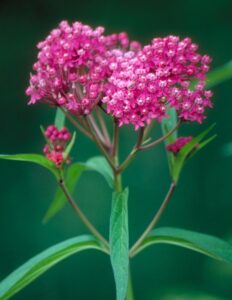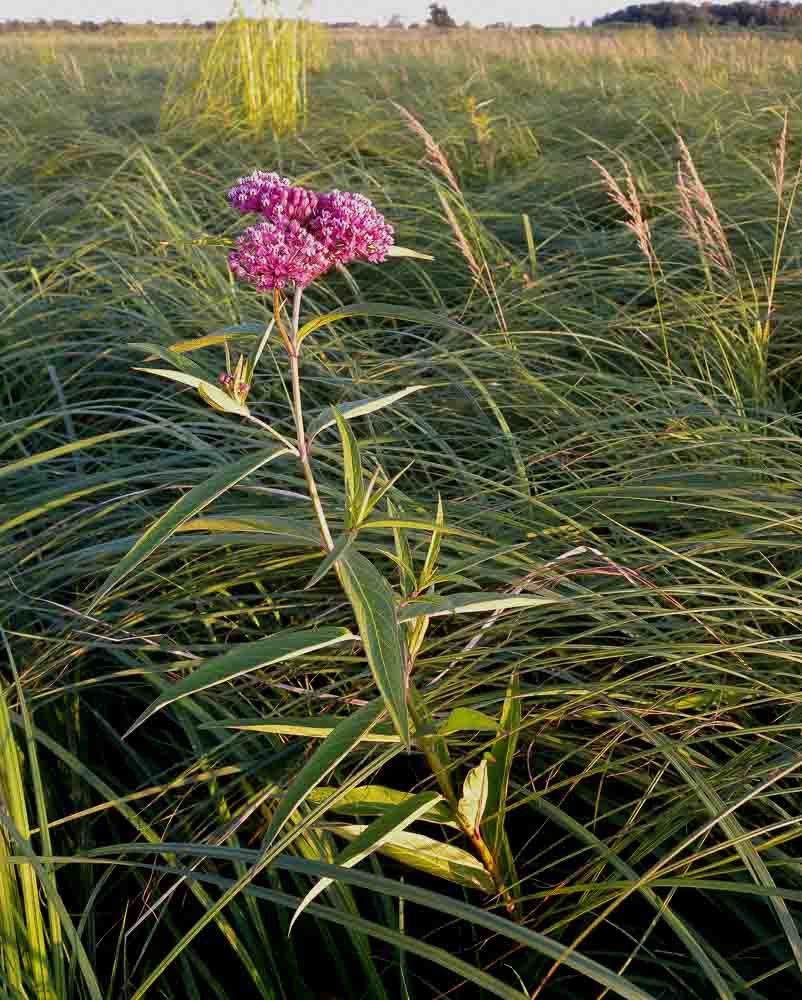
Other names: Swamp Milkweed, Rose Milkweed, Red Milkweed
Plant Family: Milkweed, Asclepiadaceae
Wetland Indicator Status: OBL
Marsh Milkweed (Asclepias incarnata), perhaps more known as Swamp Milkweed, is one of the prettiest plants you can find at the water’s edge, or deep in the marsh. Not only are its magenta blooms gorgeous, they smell wonderful too. If the stems survive the winter, in spring you may see birds tearing off the fibrous outer strips of the stems. It makes great nesting material and great cordage used by Native Americans. I once made some twine from a single Marsh Milkweed stem and found it impossible to break with my hands.
Like Common Milkweed and others of its family, Marsh Milkweed contains a sticky white sap that oozes out of roots, stems, leaves and flowers when they become damaged. The sap is mildly toxic and many insects avoid the plant. However, several insects have evolved to digest the foliage, including the sap. Some insects like the Monarch Butterfly (Danaus plexippus) become distasteful to predators after eating the plant as a ccaterpillar The beauty of the Monarch Butterfly is actually a message to predators stating I taste bad, and I’m not good for you.
Marsh Milkweed is an excellent forb for shoreland restorations, rain gardens and wetland restorations, because it is a very attractive and interesting plant. Planting it is also a way to help the Monarch Butterfly, whose population is in a steep decline from loss of Common and other milkweed species in and near farm fields. For that reason it is also a good idea to plant Common Milkweed on drier ground. It is a hardy and attractive plant in its own right.
Marsh Milkweed is most often called Swamp Milkweed, but I prefer “Marsh.” It seems to roll off the tongue better, and its habitat is more often sunny marshes than shady swamps.

